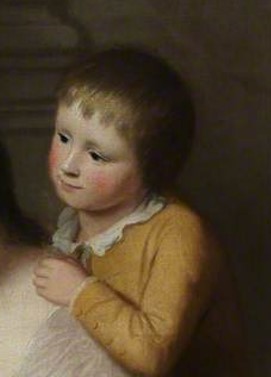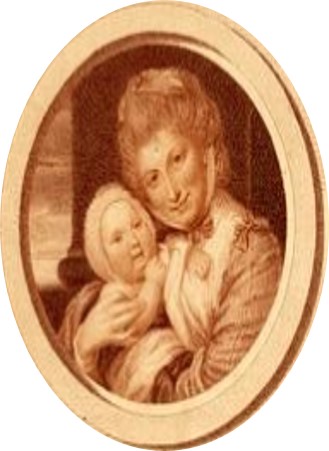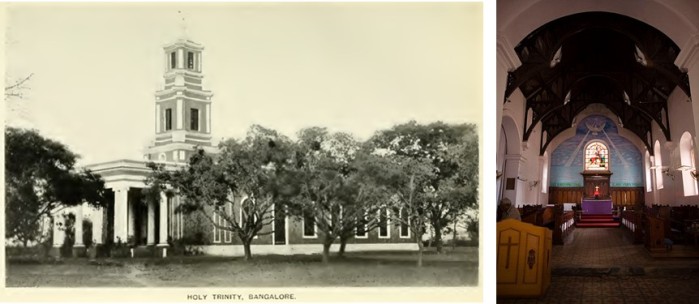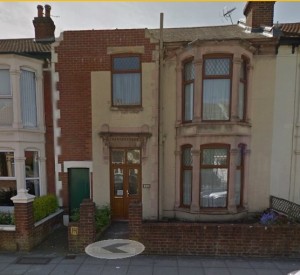The name Ruspini is an important one to the School as without Bartholomew Ruspini it is unlikely that that RMSG would exist. Clearly, the mood was right for the establishment of a charity for the daughters of indigent freemasons or the venture would have failed at the first hurdle. It is always possible that one of the other nine freemasons who joined with Ruspini in developing the idea could have taken it forward but we are where we are so a digression into the Ruspini family, in themselves not directly a part of the School’s history, will hopefully be forgiven.
The Chevalier had nine children by his second wife Elizabeth Ord[e] – the spelling of the name varies – and seven of these survived into adulthood. Harriet Aggata, born 1774, seems to have died by 1775 and is presumably the child referred to by The Freemason magazine which indicated that eight children were still alive in 1795. Sadly, it looks as if Sarah Meliora, born 1784, died in 1799. All of the other children survived into adulthood and all married, with the possible exception of George Bartholomew Holwell Ruspini, the second born (the spare to the heir).
References to him are very scarce. It is not possible to say he did not marry only that no marriage record has thus far been found. He died in 1818, just five years after his father, meaning that the Chevalier’s line came to a fullstop from 3 of his children. George’s younger brother, William, born 11 years later, predeceased both father and brother. He died in 1812. William had married and had produced a son and, in fact, from this line there are living descendants of the Chevalier in USA today, so, as we are here, let’s look at the next generation through the William line, even though he is sixth out of the nine children.
William Ruspini was born on 15 Aug 1780 and baptised in November at the family church St James Piccadilly.

Like his brothers, he became a dentist and his practice was at St. Paul’s Churchyard, information given both in directories and also in his lodge membership, the Lodge of Nine Muses. It should be pointed out here that his practice being in St Paul’s Churchyard does not mean that it was amongst the graves. St Paul’s Churchyard was an area in the vicinity of St Paul’s and a noted place of business. The area includes Paternoster Row and was particularly, but not exclusively, associated with bookselling and printing.

In February 1801, William married Lucy Jennings, daughter of Ross & Sarah Jennings. Although she was born in England (1781), it is through her connections that India is first drawn into the Ruspini story. Both William & Lucy were born and died and are buried in England – William in 1812 St Sepulchre, London and Lucy in 1848 in Lansdown cemetery, Bath. However, Lucy’s father was strongly connected with India and was buried there in 1823. When William & Lucy’s son married Jean Reynolds in India, Lucy was a witness at the marriage so was clearly in the sub-continent then but possibly not all the time. In 1821, William Orde Ruspini entered Clare College, Cambridge where his record describes him as ‘yst. s. of Chevalier Bartholomew’ and born in the East Indies – wrong on two counts. William Orde was baptised in 1804 in England so it seems highly likely that he was born there too and he was the grandson of the Chevalier and not the son. He matriculated in 1825 and in 1828, whilst serving as Chaplain of St Paul’s Cathedral, Calcutta, was granted the status of MA.
During his time in India, William married twice and produced four children. He married Jean Reynolds in 1833 but, sadly, she died the following year and was buried in Ghazeepore. Their son William Blair Ruspini was born in Bihar, India in 1833.
The Reverend William married again on 11 Aug 1842 at St Editha, Tamworth. Their first child, Frank Orde Ruspini, was born on 11 June 1843, his grandfather Thomas Bramall later affirming in a British Civil Service Evidence of Age affidavit that this was in Nottingham. However, the next child, Lucy Sophia Jean Ruspini, was born in India in 1844 as was their third child, Jessie Sophia Warren Ruspini, in 1851 at Rawal Pindi (Chowringhee). Lucy Sophia died in 1845 at the age of 5 months and 9 days and is buried in Fort William, Bengal but Jessie lived to be 78. (Frank went on to have 4 children and his son, who emigrated to USA, had eleven, so the Ruspini line is secure!)
William’s death was announced in the Gentleman’s Magazine:
‘At Calcutta, the Rev. William Ord Ruspini, M.A. after twenty-four years’ service as a chaplain of the Hon. E.I. Company. He was of Clare hall, Cambridge, B.A. 1825, M.A. 1828; and was formerly Curate of St James’s, Standard hill, Nottingham. He was grandson of the first Chevalier Ruspini.’
Let us now return to the children of said Chevalier and start at the end. Bartholomew & Elizabeth’s last born child was Robert Clayton Ruspini, born in 1790. Unlike his brothers before him, he is never described as a dentist although it is perfectly possible that he was one. When he appears in census returns, it is as ‘independent’ (i.e. not earning a salary). By his father’s will, where he is referred to as Clayton, he was granted £200.

He married Mary Jones in 1830 and ended his days in Upwell in 1862 without issue.
Working backwards through the Chevalier’s children, we come to Maria Sophia 1782-1864. In an image of her mother held by the British Museum, the date suggests that the babe-in-arms is probably Maria.
In 1803 she married Jens Friederreich Hage, a man some 30 years older than she who already had 10 children! He was a merchant from Denmark of Dutch origin. His Wikipedia entry lists all his children as being from his first wife but as that wife, Gertrud, died in 1801 and the last child was born in 1804 it can only mean that Eleonora Anastasia Hage was the child of Jens and Maria, and therefore the half-Danish granddaughter of Ruspini.
Maria died in Copenhagen in 1864 and in her gift was the portrait of her father by George Romney.
Jane Amelia Ruspini 1772-1856 was the fourth child. She married John Taylor Warren in 1800, a physician who served as a surgeon to the dragoons in Jamaica and San Domingo. In 1805 he became the deputy inspector of military hospitals and was for a time in Spain on Sir John Moore’s expedition. In 1816, he became Inspector-General of Hospitals, retiring in 1820 and, like his father in law, dedicated himself to charitable works in connection with orphans.
Jane and John lived at Marine Parade, Brighton until their deaths in 1856 and 1849 respectively. They were survived by a daughter, their only child, Jane Ann.
Elizabeth 1771-1806 is one of the children pictured in the family portrait by Nathaniel Horne which Ruspini sent to his brother Francesco. How lifelike the images of the three children are is unknown. It is notoriously difficult to paint children accurately.
In 1793, she married Charles Mapother later given in the London Gazette as Deputy Purveyor to the Forces. In his will of 1837, he is identified as Deputy Inspector General of Hospitals and specifically mentions his brother in law John Taylor Warren. In it, he names two sons: Charles Bartholomew Miller Mapother and Henry Mapother. Another son, Joseph was born and died in 1796 and there was a daughter Jane who also died in 1796.
This brings us to the last child who is actually the first child (do keep up!) – James Bladen Ruspini. And in a peculiar way this also brings us back to the School.
James married twice. Firstly in 1802 he married Miss Lethangie in Scotland – she may have been Janet or Isabella – and their only child, James Bladen Barthlomew Ruspini (known as Bladen), was born in Edinburgh. In 1818, James Snr married for a 2nd time, Martha Atterden Hughes. This marriage brought four daughters, two of whom died as infants. The remaining two were Agnes and Jessie who became pupils at the School. Their father does not appear to have been as steadfast as his own father and was perhaps a bit feckless with money, as a result of which Agnes and Jessie both qualified as the daughters of an indigent freemason. Both of them left the School at their appointed time but then reappeared later having more or less just turned up on the doorstep with nowhere else to go. Jessie eventually went to live with her half-brother Bladen but died in 1850 aged 33. Agnes was found an apprenticeship but thereafter is hard to trace. Until, that is, a somewhat peculiar record of an Agnes Simpson, widow, marrying William Grover in 1884. Agnes gave her father’s name as William Bladen Ruspini, dentist. Even more peculiarly, she declared she couldn’t write by signing her mark on the marriage certificate.
And this from a former pupil who would have received a perfectly sound education and would have been most unlikely to be illiterate when she left. Very odd.
Well, if Agnes said she couldn’t write, her grandfather who started the whole venture certainly could. As witness
The next generation back to the first.
























